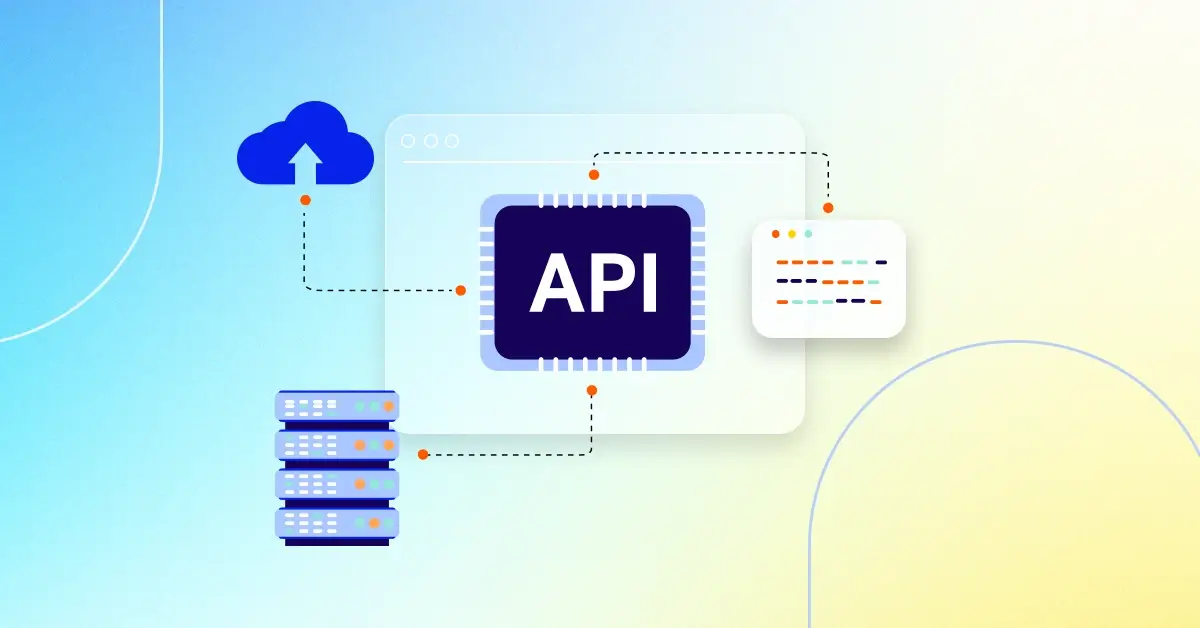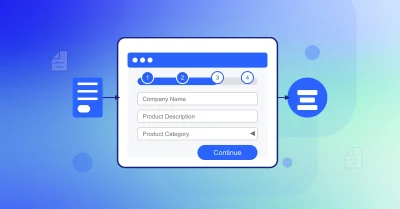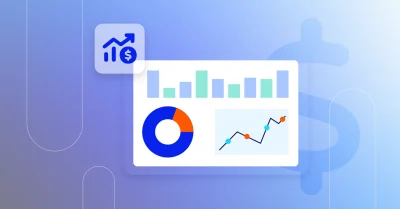What Is an API?
An Application Programming Interface (API) serves as a standardized method for software applications to communicate with each other. It defines the rules and protocols that govern how different components of software interact, allowing developers to access specific functionalities without needing to understand the underlying code.
APIs are crucial for enabling seamless integration between diverse systems and platforms. They provide developers with predefined sets of commands and protocols, streamlining the process of building complex applications by leveraging existing capabilities.
In practice, APIs facilitate the exchange of data and services across applications, empowering developers to create robust and interconnected software ecosystems. They play a pivotal role in modern software development, fostering innovation, interoperability, and scalability across various B2B environments.
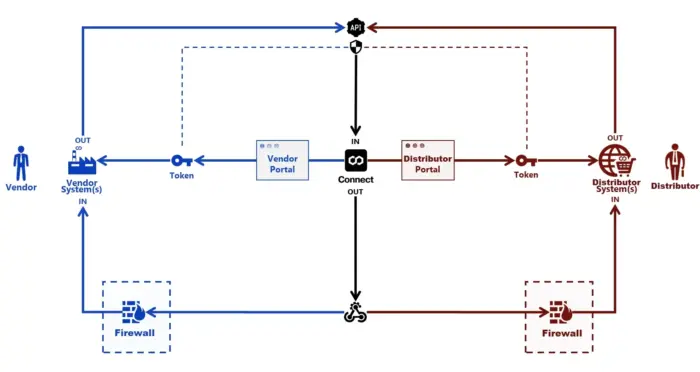
What is API integration?
API integration connects different software applications, enabling them to share data and functionalities seamlessly. APIs serve as the intermediary that allows these applications to communicate with each other.
Software as a Service (SaaS) providers expose APIs that define the methods and protocols for interacting with their software. These APIs specify what data can be accessed, how it can be retrieved or manipulated, and any authentication or authorization requirements.
Developers then utilize these APIs to build connections between the SaaS application and other systems or services. This process often involves writing code that makes HTTP requests to the API endpoints provided by the SaaS provider.
The API responses return the requested data or confirm the successful execution of actions, such as updating records or triggering events. This bidirectional flow of information enables real-time synchronization and automation across integrated systems.
Integration scenarios can vary widely, from synchronizing customer data between a CRM and an email marketing tool to automating order processing between an e-commerce platform and a logistics system.
Successful integration requires careful consideration of data mapping, error handling, and scalability to ensure reliable performance and data consistency.
The Evolution of APIs
In the early 2000s, APIs emerged as essential tools for facilitating basic integrations between web applications, such as data exchange and user authentication. These APIs focused on simplicity and interoperability to streamline interaction between different software systems.
During the mid-2000s, APIs evolved to meet the growing complexity of software, enabling developers to access specific features and data programmatically. This shift marked a transition from basic connectivity to supporting advanced functionalities like real-time updates, analytics, and automated workflows.
By the 2010s, APIs had become pivotal in the scalability and competitive edge of SaaS businesses. Companies adopted API-first strategies, treating APIs as products themselves and ensuring they were well-documented, developer-friendly, and capable of seamless third-party integrations.
Today, APIs continue to evolve rapidly within SaaS, driven by trends such as microservices architecture, cloud computing, and the proliferation of mobile and IoT devices. Modern APIs are designed for flexibility, security, and scalability, supporting diverse use cases from enterprise resource planning to AI-driven insights and beyond. They play a crucial role in fostering innovation and enhancing user experiences through interconnected software ecosystems.
API-Based SaaS Integration Examples
API-based SaaS integration is widely utilized across industries, exemplifying how different companies leverage APIs to enhance their operations. Here are a few examples highlighting how specific companies integrate SaaS APIs to streamline processes, improve efficiency, and innovate their services:
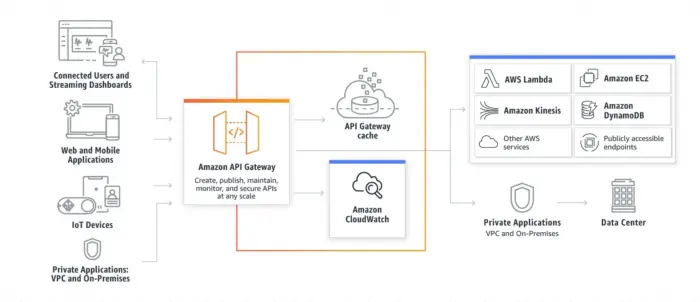
Amazon AWS
Amazon Web Services (AWS), a leading cloud computing service provider, offers a comprehensive set of APIs that enable businesses to integrate scalable cloud infrastructure and services into their SaaS applications. Companies integrate AWS services like EC2 for computing, S3 for storage, and Lambda for serverless computing to build and scale applications flexibly. AWS APIs support automation, monitoring, and security features, empowering businesses to innovate rapidly and efficiently in the cloud.
Salesforce
Salesforce, a customer relationship management (CRM) platform, offers robust APIs that allow businesses to integrate its functionalities with various other tools and systems. Companies can synchronize customer data, automate workflows, and gain comprehensive insights by integrating Salesforce with marketing automation platforms like HubSpot or service desk solutions like Zendesk.
Stripe
Stripe, a leading online payment processing platform, offers APIs that enable businesses to integrate secure payment functionalities into their SaaS applications. Companies like Shopify leverage Stripe’s APIs to manage transactions, subscriptions, and invoicing seamlessly within their e-commerce platforms. Stripe’s API-based integration supports global payment methods and enhances checkout experiences for customers worldwide.
Zendesk
Zendesk, a customer service and support platform, offers APIs that empower businesses to integrate its ticketing and helpdesk functionalities into their SaaS applications. Companies integrate Zendesk with CRM systems like Salesforce or marketing automation platforms to provide personalized customer support experiences. Zendesk’s APIs enable seamless data synchronization, automated ticket routing, and customer interaction tracking, improving service efficiency and satisfaction.
Slack
Slack, a popular team collaboration tool, provides APIs that enable seamless integration with third-party applications. Organizations can integrate Slack with project management tools such as Asana or JIRA to streamline communication and task management. Slack’s APIs facilitate real-time notifications, file sharing, and automated updates, enhancing team productivity and collaboration.
Benefits of SaaS API Integration
API integration plays a pivotal role in the success and scalability of modern SaaS platforms. By facilitating seamless communication and data exchange between different software systems, APIs unlock numerous advantages that directly impact efficiency, functionality, and user experience. Here are several key benefits of SaaS API integration:
Enhanced Functionality and Customization
APIs empower SaaS providers to expand their platform’s capabilities by integrating with complementary services and tools. This integration allows users to customize their experience, adding features that meet their specific needs without extensive development effort on the part of the SaaS provider.
Improved User Experience
Seamless API integrations contribute to a smoother user experience by enabling data synchronization across multiple platforms. This ensures that users can access consistent and up-to-date information regardless of the software they are using, leading to increased satisfaction and loyalty.
Accelerated Development Cycles
APIs streamline the development process by providing pre-built functionalities and services that developers can integrate into their applications. This accelerates time-to-market for new features and updates, allowing SaaS companies to respond more quickly to market demands and stay ahead of competitors.
Scalability and Flexibility
Scalability is a core advantage of SaaS API integration, as it allows applications to handle increased loads and user demands without compromising performance. APIs enable modular architecture, where components can be added or upgraded independently, making it easier to scale infrastructure as the user base grows.
Cost Efficiency
By leveraging APIs, SaaS providers can reduce development costs associated with building and maintaining all functionalities in-house. Instead, they can integrate with specialized third-party services that offer robust solutions at a fraction of the cost, optimizing resource allocation and improving ROI.
Business Innovation and Partnerships
APIs foster innovation by facilitating partnerships and collaborations between SaaS providers and external developers or businesses. This opens new revenue streams, expands market reach, and promotes ecosystem growth through mutually beneficial integrations.
Data-Driven Insights
Effective API integrations enable comprehensive data aggregation and analysis, providing valuable insights into user behavior, performance metrics, and operational efficiency. This data-driven approach empowers SaaS companies to make informed decisions and continuously optimize their services.
Compliance and Security
APIs can enhance security measures by enforcing standardized protocols for data exchange and authentication. They also facilitate compliance with industry regulations by ensuring data privacy and protection standards are met across integrated platforms.
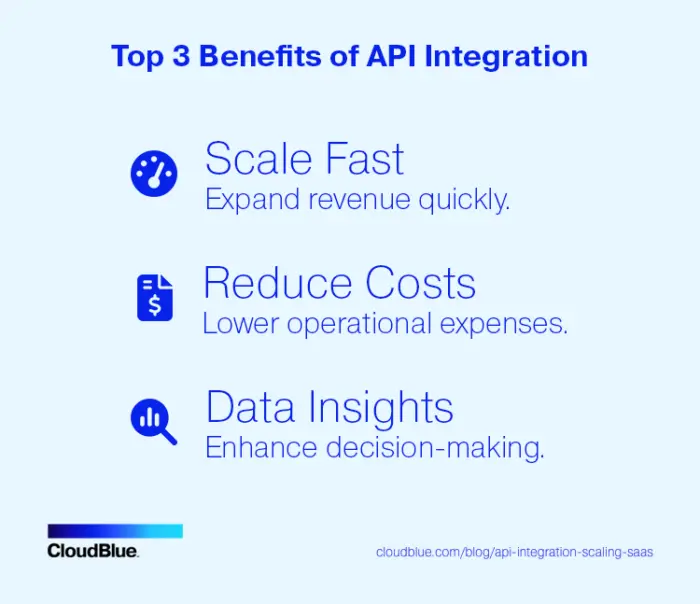
Challenges of SaaS API Integration
While SaaS API integration offers numerous benefits, it also presents several challenges that organizations must address to ensure successful implementation and operation. These challenges include:
Complexity of Integration Processes
Integrating APIs from multiple providers often involves navigating complex compatibility issues, differing data formats, and varying authentication methods. Managing these intricacies requires robust technical expertise and careful planning to ensure seamless interoperability between systems.
Maintaining Compatibility and Version Control
APIs are subject to updates and version changes over time. Ensuring backward compatibility while integrating with newer API versions can pose challenges, especially when legacy systems or third-party services rely on specific API functionalities that may be deprecated.
Data Security and Privacy Concerns
API integration requires the exchange of sensitive data between systems, raising concerns about data security and privacy. Implementing robust authentication mechanisms, data encryption, and compliance with regulatory requirements (e.g., GDPR, CCPA) are crucial to mitigate risks associated with unauthorized access or data breaches.
Performance and Reliability Issues
Poorly designed or overloaded APIs can lead to performance bottlenecks, latency issues, and service disruptions. Monitoring API performance, implementing caching strategies, and designing efficient data transfer protocols are essential to maintain optimal system reliability and responsiveness.
Dependency on Third-Party Providers
SaaS providers rely on external APIs for critical functionalities, such as payment processing or geolocation services. Dependency on third-party providers introduces risks related to service availability, vendor lock-in, and potential changes in API terms or pricing structures.
Integration Costs and Resource Allocation
Integrating multiple APIs requires significant investment in development resources, testing efforts, and ongoing maintenance. Budgeting for integration costs, allocating adequate resources, and evaluating long-term scalability is essential to avoid unexpected expenses and operational disruptions.
Overcoming Organizational Silos
Successful API integration often requires collaboration across different teams, departments, or external stakeholders. Breaking down organizational silos, fostering cross-functional communication, and aligning business objectives is critical to achieving unified platform integration goals and maximizing ROI.
Adoption
Changes resulting from API integrations can impact user workflows, requiring comprehensive training and support to ensure smooth adoption. Providing intuitive interfaces, conducting usability testing, and gathering user feedback is essential to minimize disruptions and enhance user satisfaction.
Regulatory and Compliance Requirements
SaaS providers must navigate regulatory landscapes that govern data protection, consumer rights, and industry-specific compliance standards. Ensuring API integrations adhere to legal requirements and obtaining necessary certifications or audits are essential to avoid legal liabilities and reputational risks.
Addressing these challenges requires a proactive approach, including thorough planning, stakeholder engagement, continuous monitoring, and agility in adapting to evolving technological and regulatory landscapes. By overcoming these obstacles, organizations can harness the full potential of SaaS API integration to drive innovation, optimize operations, and deliver value to their users.
SaaS API Integration Best Practices
Successful SaaS API integration is not just about connecting systems; it’s about enhancing functionality, ensuring security, and future-proofing your platform. Here are essential best practices to guide your integration journey:
Clear Integration Goals
Start by defining clear objectives for your API integration. Whether you’re aiming to improve user experience, expand functionality, or optimize operations, align your efforts with strategic business goals from the outset.
Choose Your APIs Wisely
Select APIs that not only meet your technical requirements but also offer robust documentation and reliable support. Look for scalability, security features, and compatibility with your existing systems to ensure seamless integration.
Prioritize Security
Security must be prioritized throughout the integration process. Implement robust authentication mechanisms such as OAuth 2.0 and encryption protocols to ensure data integrity and prevent unauthorized access.
Design for Scalability and Performance
Anticipate future growth by designing APIs that can scale with your user base and handle increasing data volumes efficiently. Optimize query performance, implement caching strategies, and conduct thorough load testing.
Monitor and Optimize Continuously
Establish monitoring tools to track API performance metrics and usage patterns. Proactively identify and address performance bottlenecks, refine error handling, and optimize response times to ensure reliable service delivery.
Support Developer Engagement
Provide comprehensive developer resources, including clear documentation, SDKs, and sandbox environments. Foster a collaborative environment where developers can experiment, troubleshoot, and innovate effectively.
Embrace Agile Practices
Adopt agile methodologies to iteratively design, test, and deploy API integrations. Foster cross-functional collaboration between development, operations, and business teams to accelerate development cycles and adapt to evolving needs.
Document and Communicate Effectively
Document integration processes, configuration settings, and maintenance procedures comprehensively. Maintain clear communication across teams regarding API updates, versioning strategies, and scheduled maintenance to minimize disruptions.
Stay Informed and Adaptive
Stay current on industry trends, API provider updates, and emerging technologies. Continuously evaluate new features, security enhancements, and performance optimizations to stay competitive and future-proof your integrations.
By following these best practices, organizations can navigate the complexities of API integration layers, drive innovation, and deliver value that meets both current and future business needs.
CloudBlue API

SaaS API Integration FAQ
What is the role of API documentation?
API documentation serves as a crucial resource for developers, providing detailed instructions, examples, and guidelines on how to effectively use an API. It helps developers understand the API’s functionalities, endpoints, parameters, authentication methods, and error handling. Clear and comprehensive documentation accelerates integration efforts, facilitates troubleshooting, and improves collaboration between API providers and consumers.
What is an API integration platform?
An API integration platform, or SaaS integration platform, is a software solution that facilitates the connection and interaction between various APIs. It enables seamless data exchange and workflow automation between different systems and SaaS applications. SaaS integration software simplifies API processes by providing tools for managing API connections, data transformations, and error handling.
What other types of integrations exist?
- Extensions: Custom add-ons or modules that extend the functionality of software applications.
- Webhooks: Lightweight HTTP callbacks that enable real-time notifications and data exchange between systems.
- SDKs (Software Development Kits): Bundles of pre-written code and tools that facilitate the development of applications for a specific platform or API.
What are the different types of APIs?
- RESTful APIs: Representational State Transfer APIs that use HTTP requests to perform CRUD (Create, Read, Update, Delete) operations.
- SOAP APIs: Simple Object Access Protocol APIs that use XML-based messaging protocol for communication.
- GraphQL APIs: A query language for APIs that provides a more flexible and efficient alternative to RESTful APIs for fetching data.
- WebSocket APIs: Protocol providing full-duplex communication channels over a single TCP connection, often used for real-time web applications.
- Open APIs: APIs that are publicly available and standardized, facilitating interoperability and third-party integration.
What is the difference between API and integration?
An API is a collection of rules and protocols that allow various software applications to communicate and interact with each other. It defines how software components should interact, the types of requests that can be made, and the data formats that can be used.
Integration, on the other hand, refers to the broader process of connecting different systems, applications, or components to work together seamlessly. Integration can involve APIs as well as other methods like webhooks, SDKs, and plugins to achieve data exchange, workflow automation, or functionality extension.
What is iSaaS?
Integration Software as a Service (iSaaS) is a cloud-based solution that enables businesses to connect and manage various software applications and data sources seamlessly. It facilitates the automation of workflows, data transformations, and error handling between disparate systems, ensuring smooth and efficient operations. iSaaS is essential for businesses looking to streamline their processes, reduce manual efforts, and enhance data accuracy and accessibility across their software ecosystem.
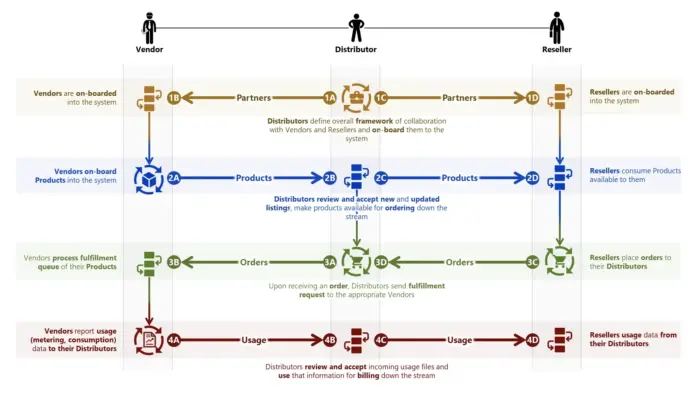
What SaaS channels benefit from API Integration services?
- Partners: API integration enables seamless collaboration and data sharing between partner platforms, enhancing joint product offerings and customer experiences.
- Vendors: Vendors can use API integration to streamline SaaS operations, automate order fulfillment, and improve inventory management through real-time data synchronization.
- Distributors: API integration allows distributors to connect their systems with software vendors, facilitating faster order processing, inventory visibility, and operational coordination.
- Resellers: Resellers benefit from API integration by accessing real-time product information, pricing updates, and order status, enhancing their ability to provide timely and accurate service to customers.
What is an API systems integrator?
An API systems integrator is a professional or organization specialized in integrating and managing APIs across different systems or platforms. They possess expertise in designing, developing, and deploying API-driven solutions to achieve specific business objectives such as process automation, data synchronization, or enhancing user experience. API systems integrators play a crucial role in implementing efficient and scalable integration solutions tailored to organizational needs and technical requirements.
What are the success metrics of API integration?
- Improved System Performance: Measure of API responsiveness, uptime, and reliability.
- Enhanced User Experience: Feedback and satisfaction ratings from end-users using integrated functionalities.
- Increased Operational Efficiency: Reduction in manual processes, faster data exchange, and streamlined workflows.
- Developer Adoption: Number of developers using the API, engagement in forums, and contributions to the developer community.
- ROI (Return on Investment): Cost savings from efficiency gains, revenue generated from new features or integrations, and overall business impact.







